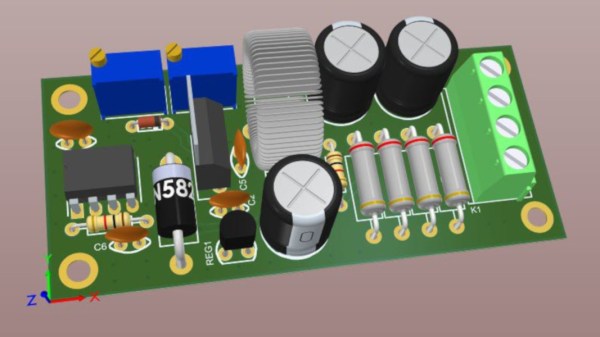Solder fumes are not nice on the lungs; nor are fumes from superglue, epoxy, or a whole mess of other things we often find ourselves using on the bench. Some people might be able to go the fume hood route to toss that all outside, but for the rest of us, there’s fume extractors. [Raph] has produced an extra-large, carbon-filtering, two-stage fume extractor that by all accounts really sucks — it is effective at hoovering up solder fumes up to 10″ from its inlet.

Even better, [Raph] built a battery box for an 18 V cordless tool battery, and broke out banana plugs so this doubles as a variable power supply via a cheap LM2596 based DC-DC converter. It also serves as a speed controller for the fans, which makes us wonder if you can adjust the PSU output and the fan speed independently…
Maximum suckage is achieved through careful baffle design. Check out the blog to see the trial-and-error process at work. Of course, having a 200 mm axial fan and 140 mm blower fan front and rear is going to move some air no matter what. Which is required to get air flow through the 38 mm thick activated carbon filter that should scrub all nasties quite nicely. We aren’t filtration experts but we can agree with [Raph]’s estimate that it will last “a while”.
If you want to roll your own, all of the STEP files are on GitHub, and [Raph]’s blog has an excellent step-by-step build guide. We’ve seen other hacks from [Raph] before, from his dovetailed modular breadboard to the machine that shaped his bed and automation for his camper van.












